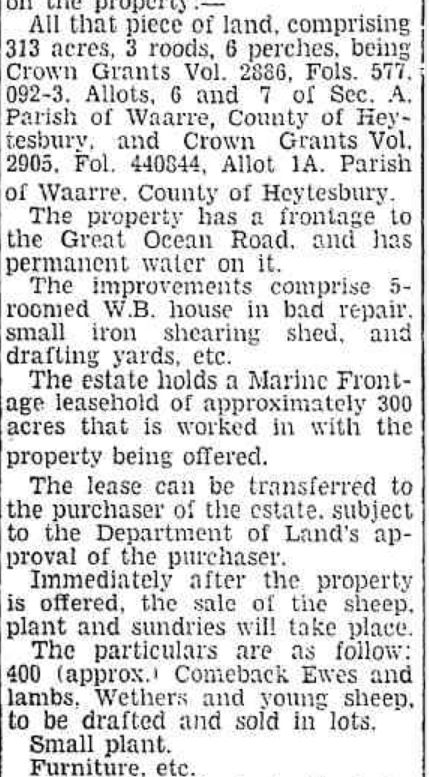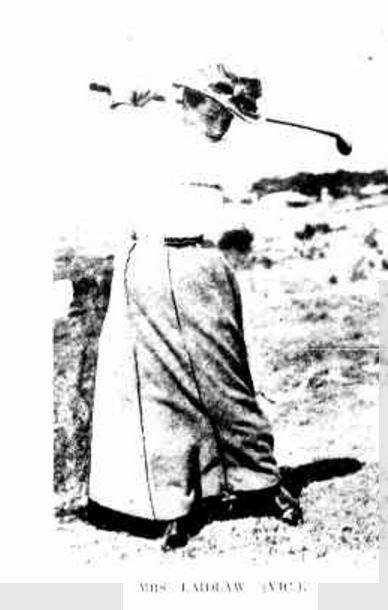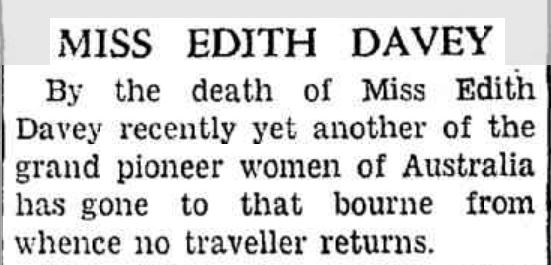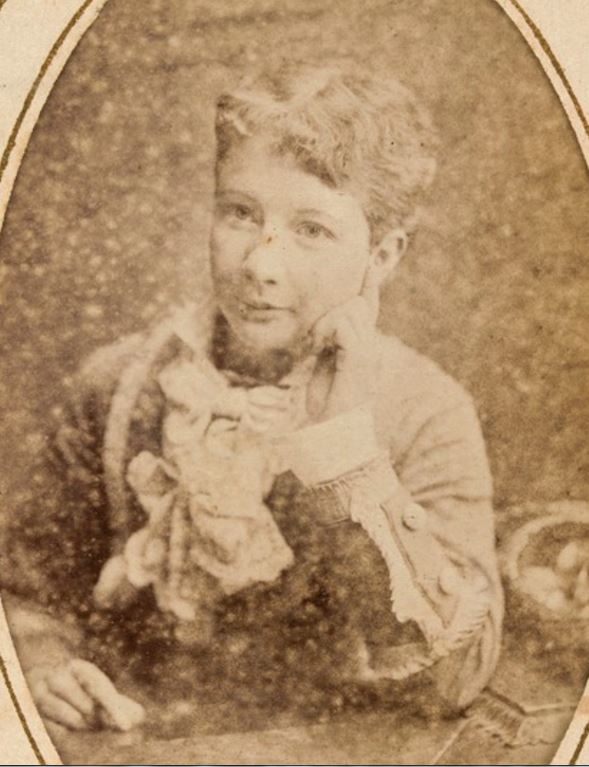On International Women’s Day 2017, I posted the first Wonderful Western District Women post followed by a second later in March, Women’s History Month. Today is International Women’s Day 2018 so it’s time for another edition. Each post looks further into the lives of Western District women I’ve come across while writing the Passing of the Pioneers posts. This time there are three women featured, Eliza Malseed, Edith Davey and Mary Learmonth. Eliza lived in an isolated area of Victoria’s far south-west coast while Edith lived in another isolated area, further east on the coast near the Twelve Apostles. Both endured the hardships of living in such places and displayed independence enabling them to endure. Mary Learmonth’s life was more comfortable, but not only was she a great sportswoman she was a champion of causes, a dedicated worker for those less fortunate than herself. Remember to click on any of the underlined text for further information.
MALSEED, Eliza Ann (c1836-1920)
Eliza Ann Malseed was born in Donegal, Ireland around 1836 to James Malseed and Ann Thompson. In 1855, Eliza and her brother James and her cousin, also James Malseed arrived at Portland aboard the Blanche Moore. An older brother John had arrived in Portland in 1849. Eliza lived in Gawler Street until she married her cousin James around 1859 and they settled at Glenorchy at the foot of Mount Richmond an extinct volcano in an isolated about twenty kilometres to the west of Portland. Their first child was born in 1860. Eliza had a further nine children.
It was a harsh life and Eliza and her young children were often left alone while James was away in Portland. She had many travellers pass her door looking for food on their way to Mount Gambier giving her many tales to recount. When remembering those days she would say,”The Lord was my shepherd”. Bushfires were frequent and the family were lucky not to lose their home in 1864. There were other dangers too. At different times in December 1878, James and one his daughters received snake bites. On each occasion, James cut out the flesh around the wound and sucked the venom out. Both somehow survived. James wrote a letter to the Portland Guardian to tell the story, published on 7 January 1879.
Eliza was a Wesleyan Methodist and attended the Mount Richmond Methodist Church which opened in 1876 and she was very active within the church community. In 1902, James fell ill and on his doctor’s advice, he moved to Portland closer to medical care. James died there on 26 July 1902. Several years later, Eliza went to live at Rose Villa, Myamyn, the home of her daughter. Eliza died there on 11 August 1920 aged eighty-four and was remembered in her obituary below.
DAVEY, Edith (1861-1939)
Edith Davey was born at Port Fairy in 1861 a daughter of Robert Davey and Ann Phillips. Edith had a sister, Annie five years older than herself. Another sister Emily was born in 1858 but she died a year after Edith’s birth. The Davey family left Port Fairy and made their way to the Port Campbell/Princetown district. They selected land on the Great Ocean Road, between the Loch Ard Gorge and the current Twelve Apostles Viewing area. They also had the use of the land down to the cliff tops below.
The Daveys named their property Edgecombe. Their neighbour to the west was Hugh Gibson of Glenample, co-owned by Peter MacArthur of Merringoort. It was at Glenample in 1878 Tom Pearson arrived to raise the alarm of the wreck of the Loch Ard. Fellow survivor Eva Carmichael stayed at Glenample for several weeks while recovering. Robert Davey was a trustee of the Loch Ard Gorge Cemetery, the burial place of the victims of the wreck. It was an isolated area but from around the end of the 1800s, the mail-coach passed via Edgecombe as it travelled between Princetown and Port Campbell and continued to do so for around twenty years.
Each of the Davey’s acquired more land in the Port Campbell/Princetown district. In 1888, Edith applied for a grant to buy land in the Princetown township and was successful and in 1889, she applied to lease 720 acres. It was tough times though with a drought and impending depression. By 1892, the rent for Edith’s lease was in arrears. Her worries continued through the decade and in 1897, the local Land Board ruled she must pay five rent installments at once and the balance in three months.
The Daveys attended St Luke’s Church of England at Princetown where Edith was the organist. She played the piano and sang at many concerts in the district over the years. Sometimes she sang duets with her sister Annie. In 1896, at a concert at the Presbyterian Church in Princetown, Edith played a piano duet with a local boy and she later sang “The Holy City” in “her usual pleasing manner”. During May 1904, Edith was presented with a gold and pearl brooch set and a book “Sanctuary Series of Voluntaries” for her many years of service as the organist of St Luke’s Church, Princetown.
Like her sister Edith, Annie Davey never married and like Edith acquired several properties. When she reached her fifties, Annie began experiencing some ill-health and in 1910, the once active woman was described as “despondent”. Annie planned a holiday but on the day she was due to leave in August 1910, her body was found in a waterhole at the back of the property. She was forty-seven at the time. Annie died intestate and that prompted her father Robert to write a will, leaving everything to Edith. Robert Davey died the following year at the age of ninety.
Edith and her mother Ann continued on at Edgecombe. By the time of her father’s death, she was fifty-five. In 1912, wild dogs were killing Edith’s lambs. In order to protect her flock, she was staying out overnight. In 1915, her mother Ann died aged eighty. Edith remained alone at Edgecombe for the next twenty-four years, her five-roomed cottage falling into disrepair. She died at the Cobden Hospital in 1939 aged seventy-six. Edith’s obituary in the Camperdown Chronicle described her as one of the “grand pioneer women of Australia”.
Soon after Edith’s death, Edgecombe was sold as was the stock, plant, and furniture.

“Advertising” Camperdown Chronicle (Vic. : 1877 – 1954) 28 November 1939: 6. Web. 7 Mar 2018 <http://nla.gov.au/nla.news-article27400636>.
LEARMONTH, Mary Simpson (1863-1939) Also known as Mary Laidlaw
Mary Learmonth was born in 1863 at Hamilton the daughter of Peter Learmonth and Mary Jarvey Pearson of Prestonholme Hamilton. Mary was a sporty young woman, with a talent for tennis and a champion croquet player. In 1896, when the Hamilton Golf Club opened, she began playing golf competitively. Mary married at the age of thirty-six to Hamilton doctor David Fraser Laidlaw on 30 November 1899 at Prestonholme at the age of thirty-six. Her brother Allan gave her away and she wore a gown of white satin with lace and chiffon trim. Fifty guests enjoyed the wedding breakfast in a marquee on the property. As Mary and David left for nearby Mountajup to catch the afternoon train, they were showered with rose petals by the guests.
Mary and David Learmonth lived at Eildon on the corner of French and Thompson Streets Hamilton, overlooking the Hamilton Botanic Gardens. The house was designed by Ussher and Kemp in 1904.
David was the Chief Medical Officer at the Hamilton Hospital but he also had a surgery at Eildon. Mary set about establishing a garden on the property and became one of the finest in the town.
Marriage didn’t put an end to Mary’s sporting activities, in fact, her involvement in golf increased and she even had time to act as the inaugural captain of the Hamilton Ladies Miniature Rifle Club formed in 1908. As well as local golf tournaments, Mary played further afield including the 1904 National Championships in 1904 where she won the Bogey Handicap with a score of 88 and hit the second-longest drive. She played in the Victorian Championships in September 1909 and won the longest drive at a length of 186 yards (170 metres). In 1930, at the age of sixty-seven, Mary won the Mount Gambier Ladies Championship at the club’s annual tournament. At Hamilton Golf Club, Mary was the undisputed ladies champion for many years winning the ladies’ championship an amazing seventeen times. Her first win was as Miss Learmonth and the rest as Mrs Laidlaw.

“Ladies’ Australian Golf Championship.” The Sydney Mail and New South Wales Advertiser (NSW : 1871 – 1912) 31 August 1904: 541. Web. 7 Mar 2017 .
Other than sport, Mary was president of the Hamilton branch of the Australian Women’s National League (AWNL) and chair of the Wannon Electorate of the AWNL covering an area from Horsham to Portland. She was also a member of the Hamilton Horticulture Society, the Hamilton branch of the Red Cross Society, and the Hamilton Ladies’ Benevolent Society. Mary eventually becoming an officer of the latter organisation. In 1935, after sixty-nine years the decision was reached to finish up the Hamilton Ladies’ Benevolent Society due to decreasing demand for their services. Mary and fellow officer Mary Ann Strachan presented a petition to the Practice Court, requesting the surplus funds of the society, totalling £600, be donated to the Hamilton Hospital maternity ward. Their request was granted on 11 June 1935.
As if that wasn’t enough, Mary showed Airedale Terriers with success. She collected books for the British and Foreign Bible Society and she was a devout member of the Hamilton Methodist Church (below) as were her parents before her.

HAMILTON WESLEYAN METHODIST CHURCH c1930. Image courtesy of the Museums Victoria Collections http://collections.museumvictoria.com.au/items/769323
A slight hiccup in Mary’s life came in 1916 when charged with driving a motor car in a dangerous manner. The charges arose from a collision with a horse-drawn wagon. Fortunately, they were dismissed when it was found the accident was not caused by Mary’s speed, but the wagon driver who was turning at the time. In the same year, Mary decorated her car and drove it in a procession through Hamilton.
David Laidlaw died in October 1925 aged fifty-six. Mary’s widowed brother Stanley Learmonth moved in with her at Eildon. Mary died at Eildon on 2 April 1939 at the age of seventy-one. Eildon was sold after her death to the Napier Club, the female equivalent of the Hamilton Club. The club, formed around 1931, still occupies Eildon today.
WONDERFUL WESTERN DISTRICT WOMEN PART 1









































You must be logged in to post a comment.